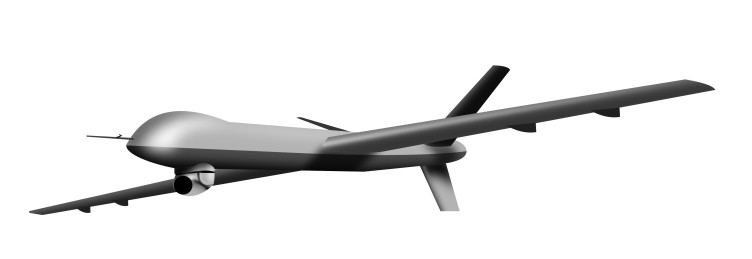
Austin Lawson
Founder & Chief Executive Officer @ Thirium Inc | Forbes Technology Council
Welcome to our first newsletter! We are on a mission to spark change and improvement in the UAS industry by shining a light on the often overlooked, yet critical factors that can significantly impact the success of an operation.
I’m Austin Lawson, the Co-founder and CEO of Thirium, Inc., a technology company focused on both the operations and technology within the UAS industry. I’ve had the privilege to work for some remarkable companies, supporting some of the most important missions in the world. I’ve also encountered the opposite, being associated with organizations that left much to be desired. From this vantage point, I’ve seen the industry evolve, witnessing enterprises on the right track and others aimlessly veering towards disaster.
In this newsletter, we will delve deep into the specifics of operational environments, tactics, techniques, and procedures (TTPs), review specific technologies, and discuss current industry practices versus what they should be. While maintaining a professional demeanor, we will not shy away from speaking the truth, no matter how uncomfortable. This is not just about discussions; it’s about sparking change and improvement in the UAS industry by shining a light on the often overlooked, yet critical factors that can significantly impact the success of an operation.
Misconceptions About Platform Success
The first of these not-so-obvious aspects I’d like to discuss is a common misconception: Many believe that the best platform will win, but that’s not the case. Sure, during testing, everything is great; it’s a controlled environment. But in an operational environment, it’s chaos. Nothing works as it should, and fundamentally, all platforms become equal. What truly differentiates one platform from another in an operational environment? The operator.
In my last operational deployment, we faced what is arguably the world’s most challenging flying environment. Daily, we navigated without GPS, battling constant spoofing attempts. Our mission involved coordinating operations with other platforms, both unmanned and manned. Yet, despite the daunting circumstances, we were the only team to consistently reach the target areas. Other platforms either failed to take off or were forced to turn back en route to the target. This relentless adversity became our norm.
You see, we didn’t have a better platform; in fact, the platforms around us were much more seasoned and much more expensive. We all had the same problems; the difference was us. We innovated, made decisions, and went above and beyond to provide the required support. We did what the other operators were not willing and/or capable of doing; we actually flew the aircraft. Yes, we eliminated jamming and spoofing by turning off our GPS, utilizing visual-based navigation practices, and we manually flew the mission.
That platform during that time period was the most successful platform in the operational area, and the success had little to do with the platform itself. It had to do with the operator, which by the way, is the most overlooked and, in my opinion, the least valued aspect of UAS operations.
The Importance of the Operator
The role of the operator is paramount and often underestimated. Many operators are merely present for a paycheck, showing a lack of interest in exceeding the minimum requirements or expanding their knowledge. This attitude, however, is detrimental as the operator essentially determines the success or failure of a platform. It is imperative to hire quality operators and implement a comprehensive training program that cultivates the understanding and decision-making skills necessary for success in the world’s most challenging operational environments. Our ability to thrive in such demanding situations was not by chance; it was a direct result of our commitment to excellence and the high caliber of our operators.
Challenges Faced by Operators
Companies seem to treat operators as expendable, only valuing them when necessary and discarding them when they are no longer needed. This lack of regard may explain why some operators do not feel motivated to excel in their roles. Instead of being empowered and educated to succeed, they are often treated as mere placeholders, given only the bare minimum of training and tools required to operate the drones. This approach is fundamentally flawed, as it erroneously assumes that the drone can handle everything on its own—a notion far from the truth. Looking ahead, I foresee a trend where operator compensation will start to decline, mirroring the pattern observed in the security industry, both domestically (CONUS) and overseas (OCONUS). This decrease in pay will inevitably drive the most skilled and dedicated operators out of the field.
Best Practices for Operators
Hire based on attitude and potential and teach operators how to think, how to make decisions, give them a true understanding of the platform, and empower them to fly the aircraft even in the worst of scenarios.
The Role of Technology
While technology is advancing, and people are working to solve things like jamming, spoofing, etc., the enemy is working to get better at knocking aircraft out of the air. The one aspect that will never change is the operator’s ability to fly an unmanned system. If you can do that, you can fly anywhere. Train appropriately and use technology as the backup plan, not the primary solution.
Conclusion
The success of any UAS operation depends significantly on the operator. It is crucial to hire quality operators, provide them with the necessary tools and training to succeed, and empower them to make decisions even in the most challenging scenarios. Technology is essential, but it should be a backup plan, not the primary solution. The operator is the most overlooked yet most critical aspect of UAS operations.
Call to Action
If you found this article insightful and believe it could benefit others in your network, please consider sharing it. Also, don’t forget to subscribe to the “UAS” newsletter to receive more actionable insights on unmanned aerial systems (UAS) operations and technology.

